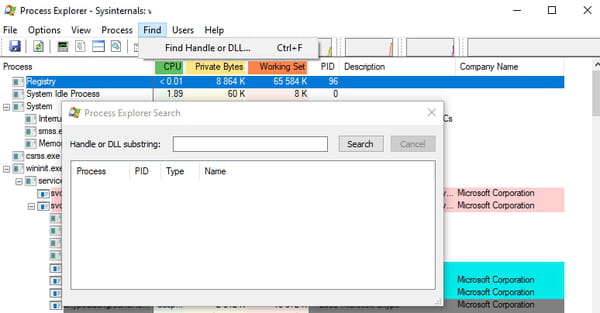Do you want to delete a file or folder, but Windows brings you an error message indicating that the operation is impossible? There are several tips to overcome these recalcitrant elements.
Unhappable element, file that is not possible to delete, file open in another program… You may have already been entitled to this kind of abstruse error message with Windows. It is the kind of situation that annoys, even that can drive crazy. Without understanding why, as a result of a false manipulation or a bug, you end up with a file or a folder impossible to delete in the Windows explorer. Sometimes it sometimes happens that it is impossible to move or rename … Fortunately, there are a few tips to overcome these recalcitrant elements.
Why Windows refuses to delete a file?
There are several reasons why Windows fails to delete a file or a folder.
- The file or folder to be deleted is already used by an application.
- The folder to be deleted contains hidden files or subfolders.
- The file or folder is read alone.
- The storage support has a problem or its file system includes errors.
- The PC is infected with a virus.
- The file or folder to be deleted was created by another user of Windows 10 who did not leave the deletion rights.
Depending on the case, various error messages may be displayed.
- Error when deleting the file or folder.
- Unable to delete the file: refused access.
- Element not found.
- Violation of sharing.
- This action cannot be carried out because the file is open in another program.
- Check that the disk is not full or protected in writing and that the file is not used today.
There are various solutions to solve these different problems of impossible deletion. They don’t all work systematically, and sometimes you have to try several before finding the right one, starting with the simplest methods.
It happens that Windows displays the error message: File used. This action cannot be carried out because the file is open in another program. Close the file and try again.
- First check that your file is not actually used by an application whose window is masked or reduced – it happens…
- If this is the case, close the application in question and try to delete the file again.
- If the file is not used or if it withstands, close all the open applications and restart the computer. You will be sure that the file will not be loaded in memory. This is the first reflex to have a recalcitrant file.
- After restarting, try to delete the file – or the folder – normally.
If this method – it is the simplest – fail, go following to try another technique.
A simple tip to delete a recalcitrant file is to try to replace it with a file bearing the same name, which forces Windows to crush it.
- Open a window with Windows explorer. Right click on an empty area and select New in the context menu, then click on Text document in the cascade submenu.
- A new file is immediately created with the .TXT extension.
- Double click on the file name (or use the key F2), then select the full name with the extension to change them and name it exactly like the file to be deleted, with the same extension (.docx, .avi, .xlsx, .mp3 or other).

- Windows displays a warning window asking you if you really want to change the extension. Click on OK To validate.

- Slide or copy the renowned file in the folder where the file is impossible to delete.
- Windows 10 then displays a warning window indicating that a file of the same name exists at the chosen destination and asking you to choose an action. Click on Replace the file in the destination.

- If all goes well, the recalcitrant file is erased, crushed by its replacement, that you only have to delete normally!
Safe mode is a mode in which Windows only loads the essentials. It works in light version, without closing with certain services and programs, and that is why it is often used to solve problems.
The way to start a PC in safe mode has evolved. In the old versions of Windows, it was enough to press the key F8 of the keyboard during the first seconds of the start of the computer, before Windows launched, and to choose the safe mode from the options presented in a minimalist screen. With Windows 10, Microsoft has implemented another method, richer in options, but also more complex to memorize. To find out everything about safe mode in Windows 10, see our special practical sheet.
In any case, start your C in safe mode, then try to delete the recalcitrant file. If it doesn’t work, keep another method.
How to delete a locked file with specialized software ?
If none of the previous methods work, you can use specialized utilities that unlock access to files that are impossible to delete. This is the case, for example, of Unlocker, free and very easy to use software that you can download from our site.
- Download, install then open alocker.
- In ‘Unique software window, browse the arborescence of your PC to locate the file to be deleted.
- Click on the file name, then on OK.
- The file is then unlocked, which allows you to rename it, move it or delete it.
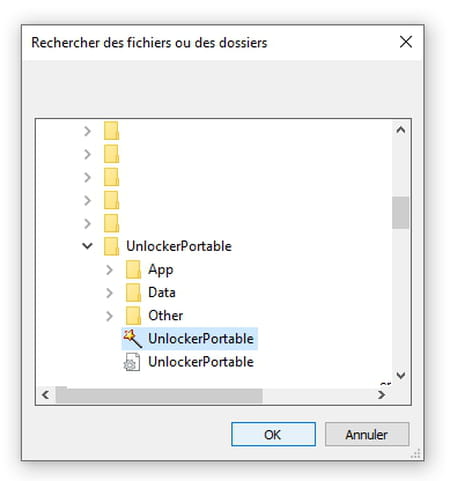
In the screenshot below, you see an example of an error message Unhappy That Windows 10 sometimes displays when you want to delete a file. Whatever manipulation you try, this error message “Impression that is not found. It no longer exists in … check its current location, and try again” will be displayed and Windows will refuse to erase this file or this folder.
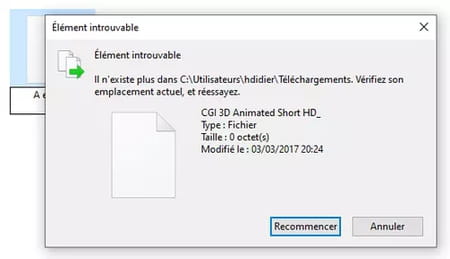
But you can easily delete this which is not found without typing the slightest command line and without going through the safe mode of Windows. The trick is to get around the Windows 10 explorer and go through compression and file archiving software, such as 7-Zip or Winrar. If you do not have a file compression software installed on your computer, you can download a free one by going through our selection.
- Open your compression and archiving software.
- Once in the software interface, browse your PC folders to find the file to delete.
- Click on the name of the “Unwitting” file to select it, then click on DELETE.
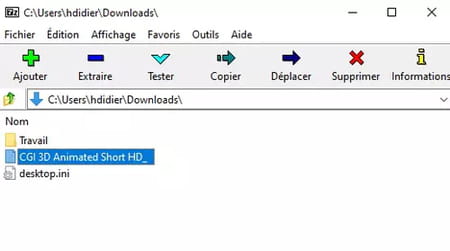
- Confirm the deletion of the file by clicking on Yes.
- All you have to do is empty the Windows basket to get rid of your file that is not found …
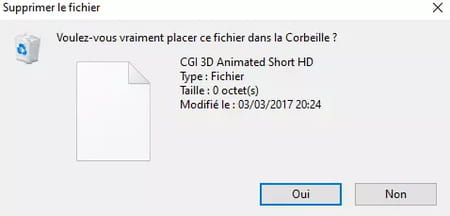
A method efficient enough to erase a file consists of going through the Windows command prompt-or by PowerShell, its replacement in Windows 10. Although rustic-it is the heritage of the ancient MS-DOS system of the first PCs …-, this tool remains powerful and very effective for certain operations. And he often manages to erase files that resist Windows. For more information and advice on the use of the command prompt, see the practical sheet that is entirely dedicated to it.
- Type the shortcut Windows + R. The execute window. opens. In the seizure field, type cmdthen validate with OK or a touch Entrance.
- After the flashing slider, type the command CD followed by Directory path Containing the file to delete and validate.CD.
- Then type the command del nom_de_re_fichier then press the key Entrance To validate and start deletion. Your file is in principle erased.
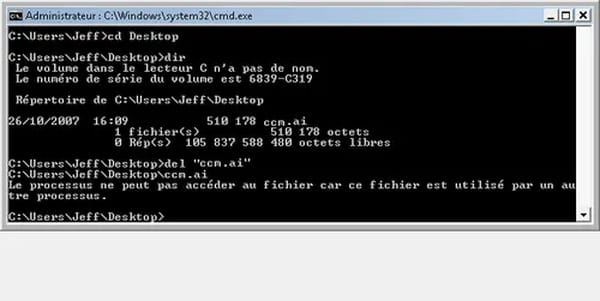
Windows happens prevents deletion because an application – or one of its processes – that you do not really see the file. In this case, you must be able to identify said application and force it to stop. An operation that can be carried out with specialized – and free software – such as Process Explorer, which you can download here. This utility is in English, but it remains very easy to use.
- Download and install Process Explorer on your PC then open the software.
- Click on Find in the menu, then on Find Handle or Dll.
- Enter the name of the file you are looking to delete in the field Handle gold dll substanting, then click the button Search.
- Process Explorer Search for the process that uses your file. Locate the execution application and stop it by clicking on its name with the right button then on Kill Process.
- The process is stopped – forcibly -, and your file is released. Then try to delete it normally.
